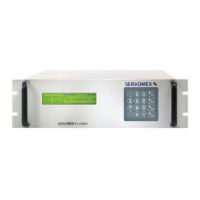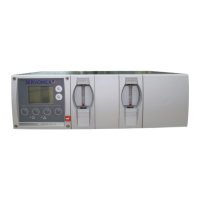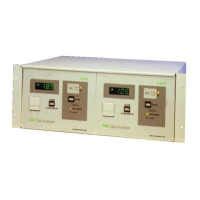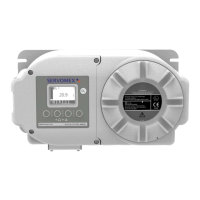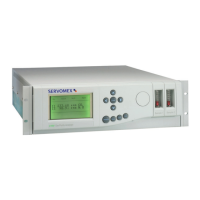1.3
The analyser's software is menu driven and has been designed to be as intuitive as
possible, enabling the user to fully operate and control the 2500 with the minimum of
familiarisation.
1.3 Basic Construction
The basic construction of the 2500 is shown in Figure 1.2. It comprises 2 cast end
assemblies (with hinged opening/removable covers), connected by a rigid mounting
beam, or chassis. The sample cell is mounted between the 2 end assemblies and is
removable for cleaning. This configuration results in a single optical axis, i.e. straight
through beam design, with no alignment adjustments necessary. The source end (right
side) contains the soft U.V. or infrared source, which generates a broad beam of
energy across the appropriate spectrum. This is mounted on the chopper box
assembly, which contains the interference filters, mounted on a rotating chopper wheel.
These filters select the appropriate wavelengths for the analysis for which the 2500 is
configured. In most applications, there is one measurement wavelength and one
reference wavelength for each measured component.
The infrared or visible beam, alternating in wavelength, is then focused through the
sample cell, where energy at the measurement wavelength is selectively absorbed by
the components being analysed. The remaining energy falls on the detector in the
detector end.
The sample cell is a simple thick metal construction (316 stainless steel as standard)
fitted with optical windows (each 6 mm thick) to allow passage of the beam. It is
supported between the 2 ends of the 2500 by short cylindrical bosses, which may be
scrubbed or purged, depending on application. The whole cell assembly is easily
removed by loosening the two bosses and lifting it away, as described in Section 5.
WARNING
The EU1 versions are intended for use with a suitably certified Purge Control
System (PCS). Do not install a EU1 version in a hazardous area without a
purge controller.
NOTE
Full technical specifications for 2500 Series Analysers are presented in section 7 of this
manual.
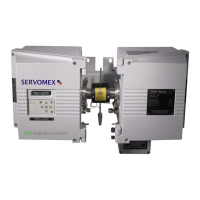
